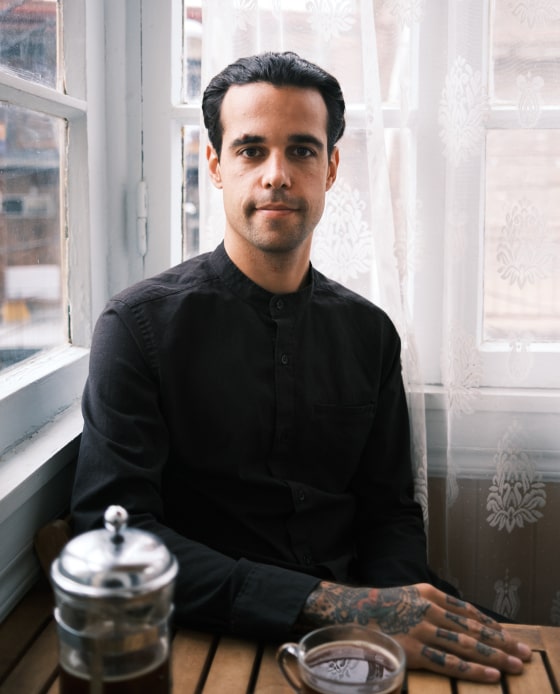2022 / website
Refreshing a SaaS website and product at MailerLite
Most UX case studies focus on one isolated feature. Yet growth comes not from perfection in one area but from a coherence across every facet of your product. For almost three years, I worked with dev, product, and marketing teams to design and launch new features, strategize website direction, and unify our product voice through an in-depth set of practices and guidelines.
Here is a sampling of the many projects that I worked on.
Role: UX design and Growth
produced at: in-house design team
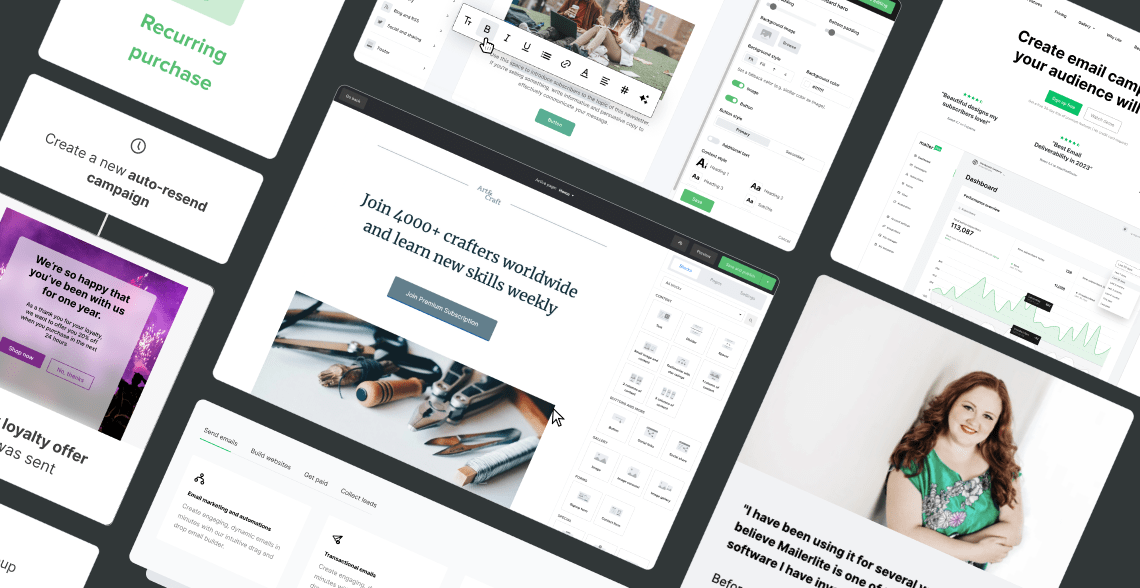
One of the key features that originally set MailerLite apart from it's competitors was its drag-&-drop editor, the first in the email marketing industry.
Research told us that many users were confused by the layout of the components within the refactored builder - a point of major friction. We drastically redesigned the editor UI to solve these issues, and added a simplified AI Subject Line generator that became one of our fastest-adopted features.
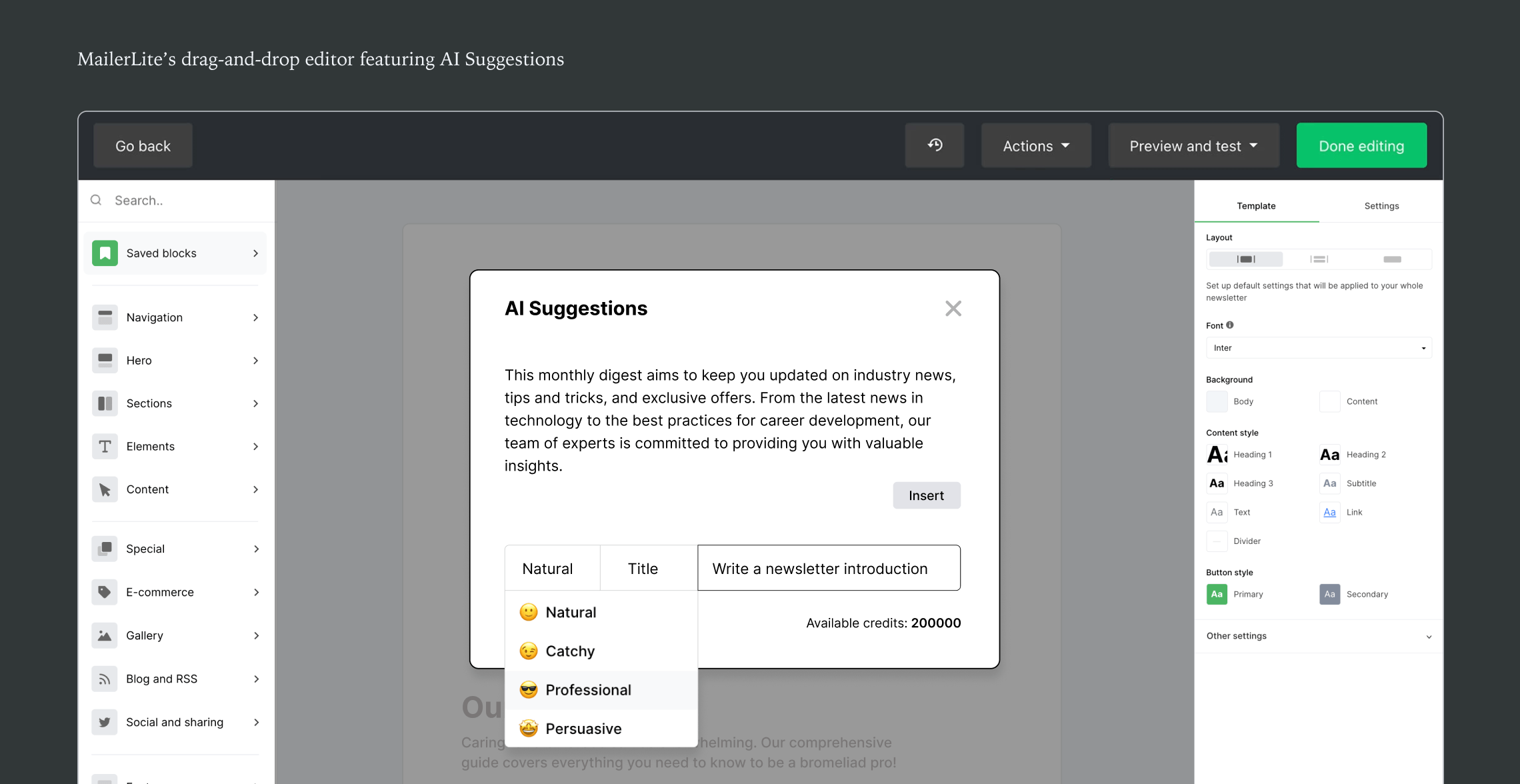
Following the release of our updated product, we moved on to our 4-year-old web experience. Our PLG focus meant that for the majority of our users our website was more than just a marketing tool - it was the first step in their onboarding.
With this in mind, we redesigned the website to better represent the design of the product, using copy and interactions that deliberately guided the user to their first step in the now-coherent onboarding flow.
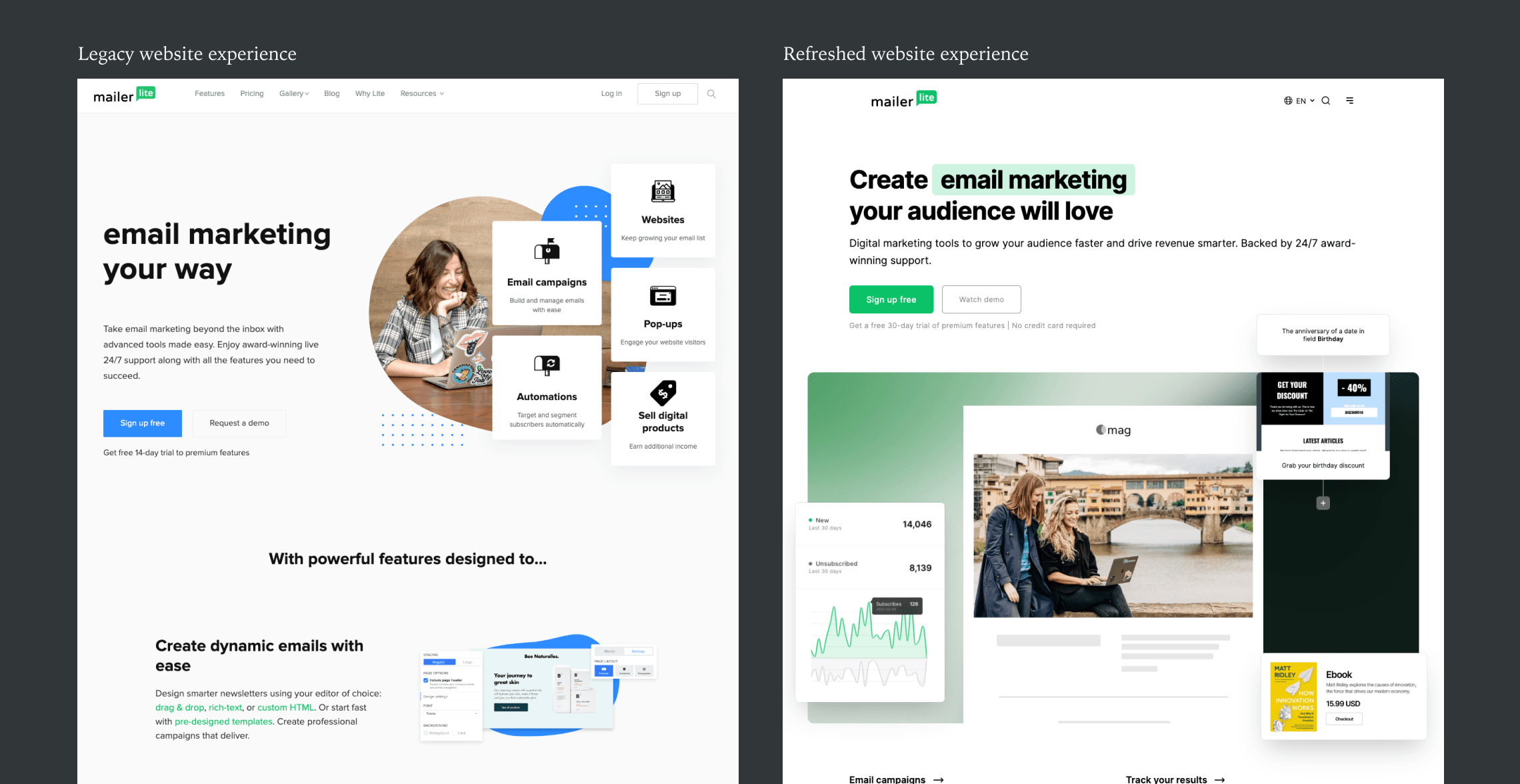
We also chose this time to rebuild the website using Statamic, giving us the flexibility to create custom components that our team could use to quickly build their own pages with a visual builder. Although still at the start of my development journey, I was able to design, iterate on, and develop one of our key new community features, the Wall of Love.
The final product is easy to update and manage for our community team members, and maintained our clean, simple-solution-first design ethos. To this date, the page is regularly updated by members of non-dev teams without issue.
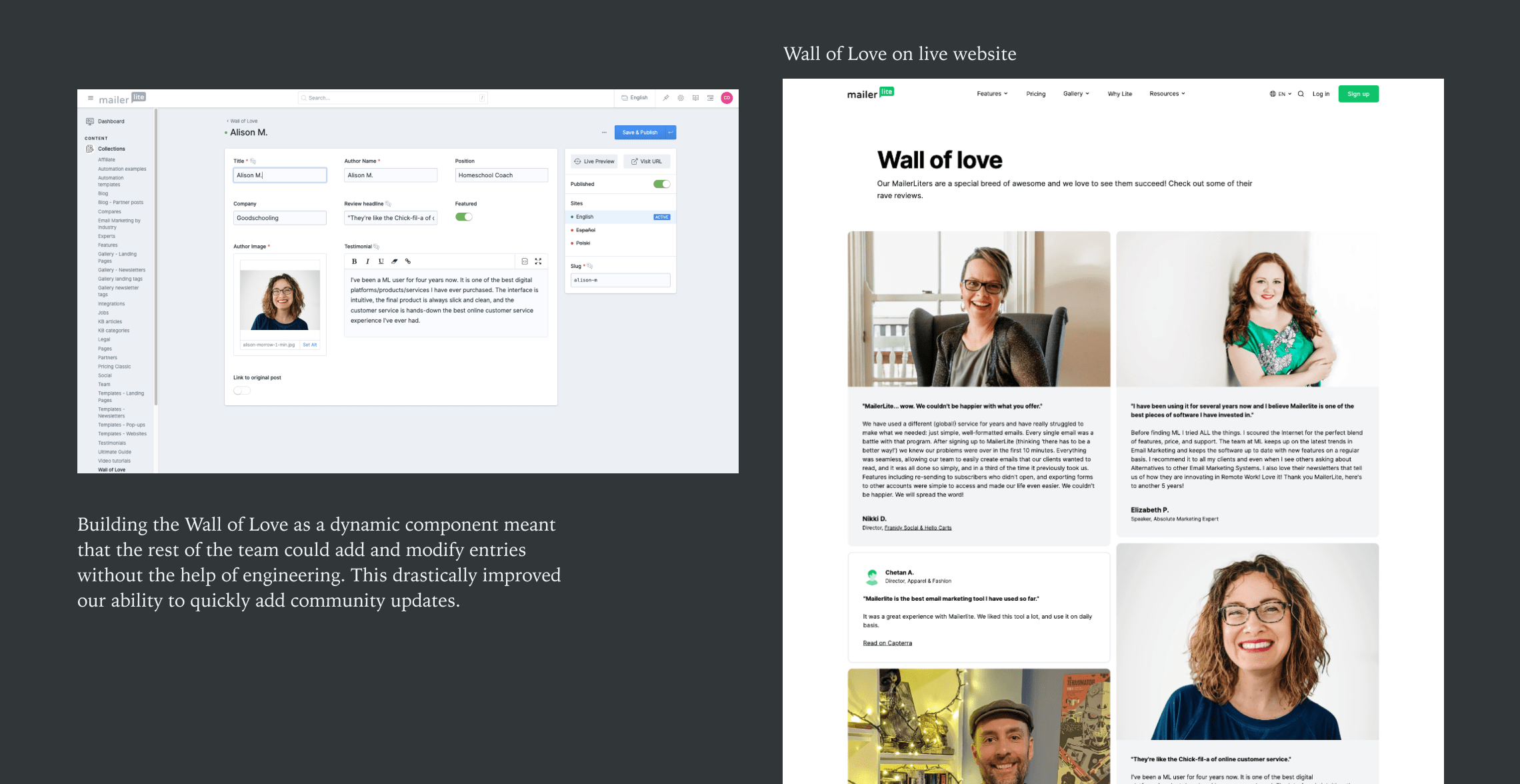
Post-launch, we moved on to the next step in our growth-focused design updates. Together with my PM, we created a repeatable process for conducting website-visitor research and synthesizing it into experiments.
Our growth framework was focused not only on filtering input from user-research, but making it equally easy for non-design team members to contribute their own ideas in the form of what we called "bets." These bets were then reviewed, rated, and prioritized accordingly.
Within the first year, we found that our tiny growth team had produced outsize gains when it came to both new signups and plan upgrades.
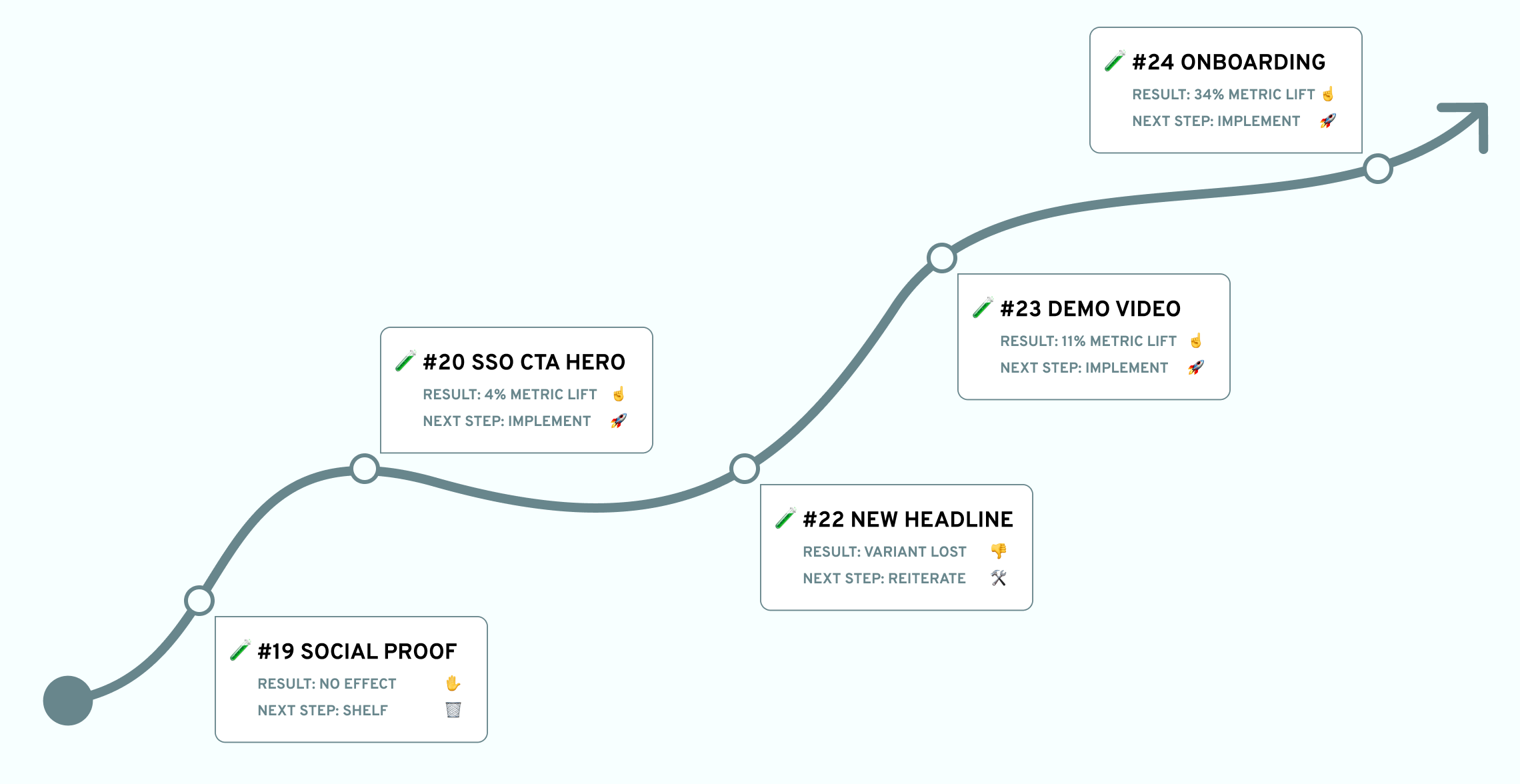
The final step in our redesign was to create guidelines that anyone could follow. Although the MailerLite team had rapidly grown, the mindset around design was still dogmatically what had worked for a smaller team, summed up in this quote;
"Good designers don't need guidelines."
When I joined the team in early 2021, it was clear that this mindset had created multiple, fast-growing issues around design consistency, resulting in hundreds of hours of constant revisions and wasted time.
There was no source of truth.
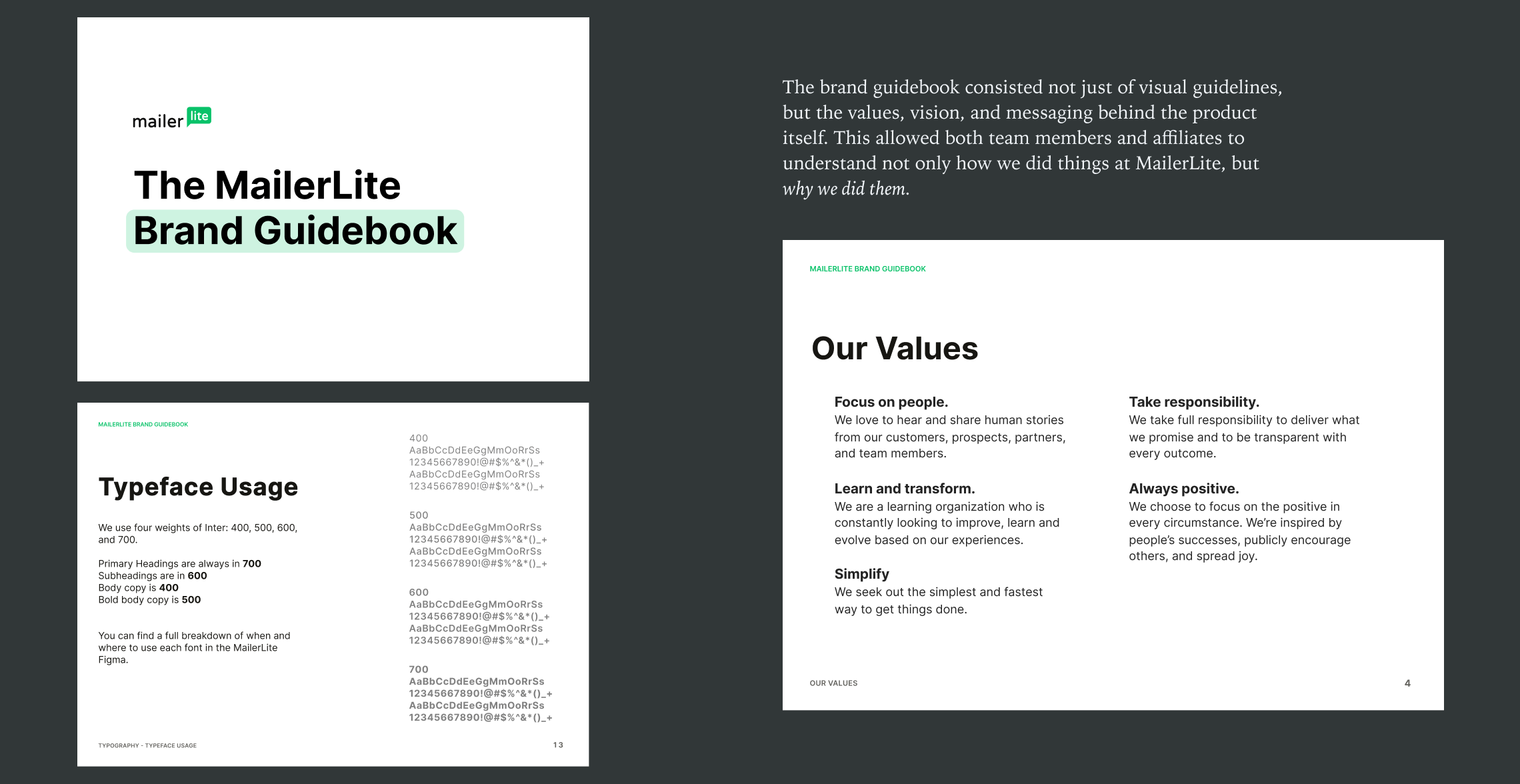
To solve this problem, I orchestrated meetings between marketing, design, and product to discuss, argue, and distill just who MailerLite was and why.
These conversations were used to create the first set of brand guidelines created for MailerLite. The brand book that was designed based on these guidelines is now used company-wide and is sent to affiliates and collaborators.
While this may seem more a task for a brand designer, the same UX principles that we used to guide the direction of the product were used here; interviews with team members allowed us to create guidelines and design tools that could benefit them. Brand guidelines, and the planning around them, are as much a part of a growth strategy as any experimentation framework or analytics tool.
Some of the most important tasks of a growth designer are those that fall into the category of improving processes and streamlining design frameworks to the point that they disappear and become second-nature for the entire team.

My time at MailerLite taught me the value of being able to work cross-team to create a unified whole. After launch, we saw an immediate and consistent uptick in growth with the new MailerLite now outpacing the legacy version.
Although a great product comes first, growth comes from using UX insights to not only build user-focused features, but to guide everything from your copywriting to your website design. To quote the great Elena Verna:
"What makes a great company is a good enough product with a predictable, sustainable, and competitively defensible growth model."
UX insights are how your create that model. And so, as a growth-focused (more like obsessed 😅) product designer, I believe it is my duty to fill many shoes. PLG strategy one day, experimentation frameworks the next, with a bit of design systems and copywriting thrown in for good measure. A good designer is someone who knows how to bring clarity to each of these disciplines, to make sure they all follow the same north star.
Brilliant products deserve brilliant marketing and equally brilliant design. This is only achieved through holistic thinking and a willingness to listen to your users.
I believe great design is ethical. Why? Because design is the practice of deliberately focusing on, and responding to, your users' needs. Those needs change. You change, too. Now let's design a growth plan that doesn't feel deceitful and make the internet just a little bit better through honesty and empathy.
Email me about a project.
 Consulting with the MailerLite team in Istanbul.
Consulting with the MailerLite team in Istanbul.
“Cody is my favorite UX designer that I have worked with. A great design thinker, combining creativity, business strategy and attention to detail, all in one. What's also great about Cody is his mannerism on receiving feedback and turning this into solutions one can actually work with - he's incredible with deadlines and honest with what can and cannot work.”










